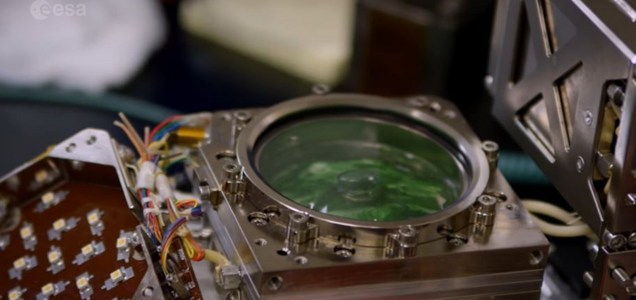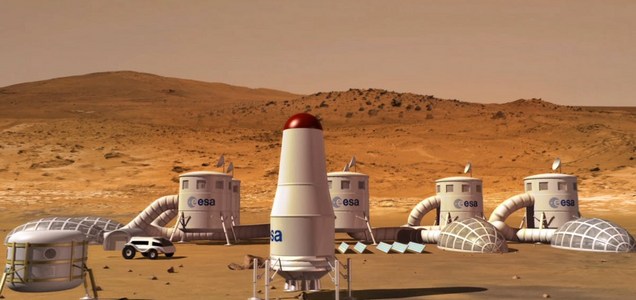
Do you know the manga "Space Brothers"? It is a story of brothers aiming for space, but it is a masterpiece that is overwhelmed by the carefully crafted production that makes you feel the life of each and every character who plays a small role, not to mention the story that is based on in-depth research. If you haven't read it yet, please pick it up if you have the chance.
Now, I would like to introduce some algae research related to space development under the title of "Space Algae" this time, likening to Space Brothers.
Is there a connection between space and algae in the first place? Many people think that it is, but it is actually a field that has been attracting attention and research for quite a long time. This is because, in order to stay in outer space for a long time, self-sufficiency in air (oxygen) and food is required, and there is an idea to use algae for this self-sufficiency system.
Algae can absorb the carbon dioxide exhaled by astronauts and supply oxygen. In addition, it has the advantage of requiring less space and resources for cultivation than plants, and it takes less time to grow, so it is extremely compatible with space.
With this use of algae in outer space in mind, on December 15, 2017, as part of the ESA (European Space Agency) project, living spirulina was launched to the space station (ISS) for the first time. Spirulina placed in a cylindrical photobioreactor was cultured on the ISS for about a month, confirming that it grew at the same rate as on Earth and also produced oxygen. Sampling was performed four times during the one-month culture period, and it seems that the test was performed by replacing the medium four times as well.
In the case of liquid culture in a zero gravity space, the supply of carbon dioxide into the liquid and the removal of the generated oxygen are issues. It seems to be a mechanism to force gas exchange by applying pressure. I would like to confirm detailed information about this area when it is published as a paper.
The preparation of the equipment for this test, the experiment plan on the space station, the sample measurement after returning, etc. were compiled and published as materials, so if you are interested, please take a look at the following materials. I think. There are many photographs, and you can feel the happy atmosphere of the researchers. Any researcher would be thrilled if they were given a situation where their own experimental equipment was launched on a spacecraft (SpaceX), tested in space, and the samples could be analyzed.
In September 2018, NASA also launched spirulina to the space station and is conducting tests to confirm its ability to proliferate under microgravity. This seems to have been based on an idea submitted by a team of high school students as part of a program called "ISS Science for Everyone" organized by NASA.
When I was a high school student, I couldn't even imagine that a team of high school students would propose a sci-fi theme and actually test it in space. If the times can change so much in 20 years, it wouldn't be strange to see humans living on the moon and arriving on Mars in 20 years. I feel strongly that the range that people can imagine can be realized eventually.
NanoRacks-Modesto Christian School-Comparing the Growth of Spirulina on Earth and in Microgravity (NanoRacks-MCS-Spirulina Experiment) examines a type of Spirulina that is sent pre-grown to the International Space Station (ISS) with required nutrients for further growth. The algae grows and reacts to the microgravity in space, and also to the gravity on Earth.
Read this at nasa.gov >
In 2016, the Swiss company Ruag Space issued a press release announcing that it was developing a prototype air recycling system using algae. It seems that Spirulina is used as the target algae here as well. Spirulina is likely to be the favorite space algae in terms of excellent nutritional value, accumulation of abundant basic data, and ease of handling.
Algen sind die Lunge der Erde. Sie machen die Hälfte der weltweiten Sauerstoffproduktion. Auch im Weltall könnten sie Raumfahrende mit Atemluft zu versorgen. .
Read this article on bluewin.ch >
In addition to Spirulina, NASA is also developing a liquid algae growth system using green algae called Chlamydomonas reinhardtii . In this system, culture is performed using gas-permeable plastic bags used in mammalian cell culture. By using this bag, gas exchange is possible without water loss.
On a slightly larger scale,
there is also talk of terraforming Mars using algae (planetary terrestrial plan).
The idea here is to first artificially raise the temperature of the atmosphere of Mars and bring in living algae from Earth to produce oxygen.
While valuing the relationship between humanity and space, the "Space Information Center" will continue to absorb various information and pass it on to everyone.
Read this at spaceinfo.jaxa.jp >
In fact, domestic research on terrestrial cyanobacteria (Nostoc sp. HK-01), which is expected to contribute to space agriculture and the creation of a living environment in Mars terraforming, has also been reported. Even if this terrestrial cyanobacterium is exposed to a high vacuum environment of 10-5 Pa in a dry state, it can be revived by adding water afterward, and has the ability to grow as much as or more than the control by liquid culture. is shown. Furthermore, resuscitation by hydration was confirmed even after exposure to high vacuum for one year (Arai, 2013).
By the way, the study of planting algae on Mars to create oxygen and terraform it is being seriously tackled by NASA using a facility called "Mars Room" that creates a simulated Martian environment. From the point of view of cosmic environmental problems, I wonder if it's okay to transplant living things without permission.
So far, I have summarized algae research in the cutting-edge research field of space, from culturing on the space station to terraforming research on Mars. It is paradoxical and interesting that algae, which can be said to be one of the most primitive forms of life that arose 3.5 billion years ago, is attracting attention in cutting-edge fields.
Ultimately, people cannot live sustainably unless they construct an ecosystem, and the power of algae is expected to serve as the starting point for ecosystems. This fact reminds us of the reality that humans are part of an ecosystem and live in connection with other living things. Of course, there is the aspect of cutting-edge research, but the essence of space development may actually be that it reminds us of the obvious that people have forgotten.
Reference material
Mars Underground Habitation Concept and Utilization of Cyanobacteria , Arai, Int. J. Microgravity Sci. Appl. Vol. 30 No. 2 2013 (105–110)










